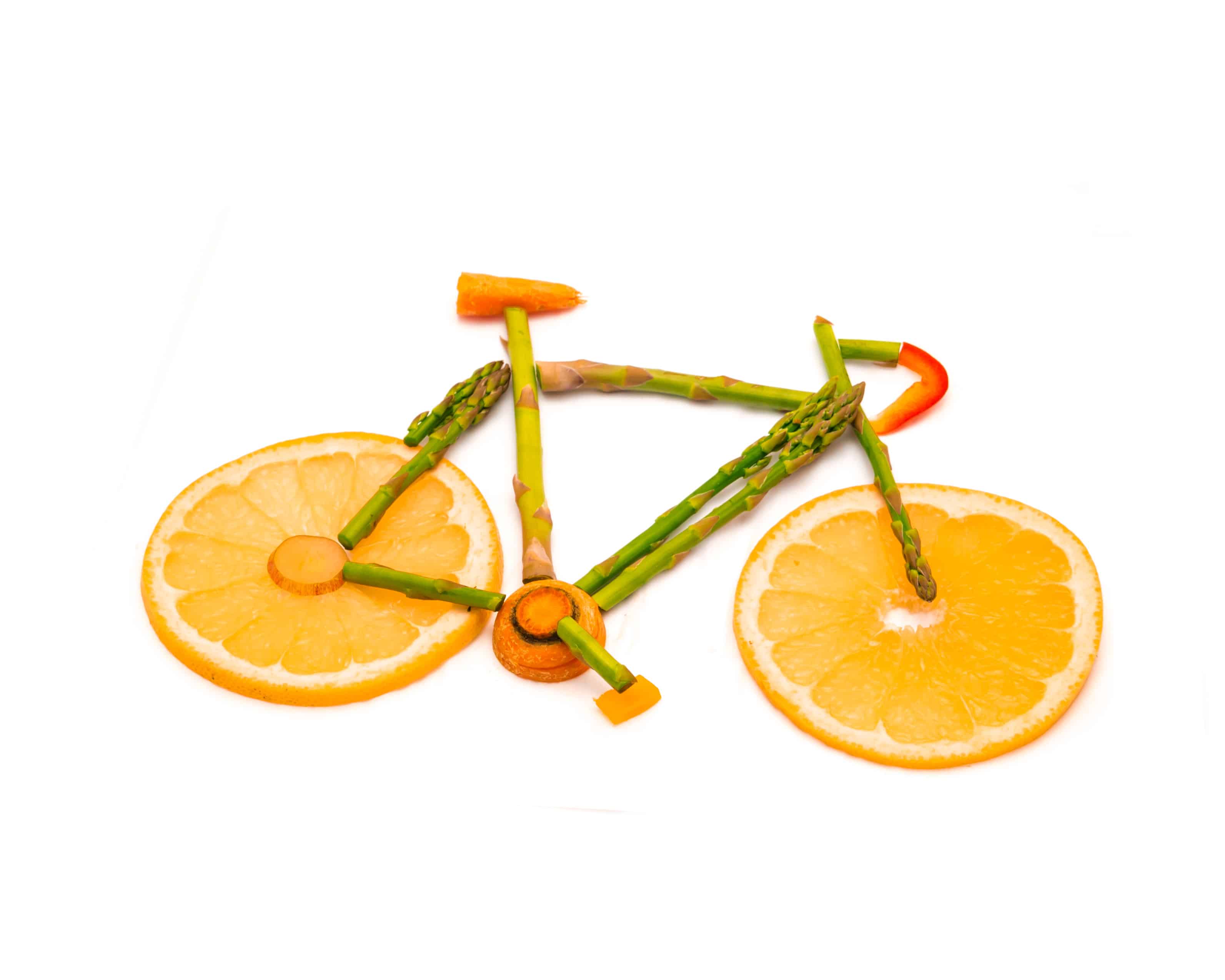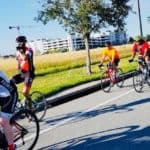
While Nona Cycle has expanded in size, we also have seen the ability to ride faster and longer. All of this requires optimal health and proper nutrition. The tips below are for all healthy athletes and good to remember when increasing activity.
1. Consume the Right Number of Calories
The great news about taking up cycling is the ability to consume more calories. Unfortunately, many cyclists reward themselves above and beyond the calories burned on a ride. Try not to forget to make healthy choices and watch the portion sizes. A good way to estimate your additional calorie need is to multiply the distance travelled in miles by 40-50 calories. Therefore, if you’ve been out for a 30-mile ride, you can estimate an extra calorie need of between 1,200-1,500 calories, erring toward the bottom end of this range if you’re a slower or lighter rider and toward the top end if you’re faster or heavier.
Of course, having a GPS device that estimates calories burned will give you a more accurate indication. If you’re seeking a little weight loss, then aim to leave a shortfall in calories replaced to create a deficit that will encourage some fat loss, but limit this to a maximum 250 calories-a-day deficit if you want to continue to ride strong.
2. Carbohydrate: The Body’s Fuel Supply
Carbohydrate is the body’s primary energy source for cycling. Stored in the muscle, any excess in total carbohydrate intake above the body’s calorie needs will be stored as fat (the same is true for protein and fat). Large servings of carbohydrate lead to a peak and trough of energy that can leave you feeling very lethargic, therefore avoid large meal portions and increase eating to five to six smaller meals per day.
It’s worth noting that all carbohydrates are not equal and will have a different impact on energy levels and health. Indulging too many sugary carbohydrates in the regular daily diet can have a negative impact on recovery, energy levels and health. It’s always best to opt instead for whole grain, slow-release carbohydrates and fruits and vegetables that are packed full of nutrients rather than refined sugar.
3. Are You Eating Enough Protein?
Getting adequate protein into your diet will support your health, immune function and recovery. Approximately .5 to .8 grams per pound of body weight is needed and should be consumed throughout the day rather than large portions at one time. With recent research highlighting that protein is also more filling than an equal calorie measure of carbohydrate or fat, increasing your intake just a little can help to keep your appetite under control, too.
4. Good Fats, Not Bad Fats
The type of fat you select is critical to health, performance and weight maintenance. Fats are grouped into “good” fats and “bad” fats. Good fats include polyunsaturated fats (Omega 3 and Omega 6 fats) and monounsaturated fats (Omega 9 fats). Whereas saturated fats found in meats and processed foods are to be limited, Omega 3 and 6 fats are vital to maintaining health and are found in nuts, seeds, fish and oils such as flaxseed, borage and starflower oil.
5. Make Sure You Drink Enough to Perform at Your Best
Drinking enough fluid will not only support better riding but also will result in better energy levels. If you have experienced that foggy-head feeling after a long ride, it’s usually a sign to drink up. In addition to drinking approximately 64 ounces of water a day, cyclists should ideally be drinking additional fluid to match any loss during riding. With just 2% dehydration resulting in a significant reduction in performance, it’s important to hydrate during your ride and after completion.
6. Fuel Your Ride Properly
If you are eating adequately during the day, easy-paced rides of less than 90 minutes don’t always need additional fuel support. Your carbohydrate stores will provide plenty of fuel over this period. If you are heading out for a longer or more intense ride, topping up your carbohydrate stores will support better performance so that you still have plenty of strength toward the end. Studies indicate that a fueling plan delivering between 30g and 60g of carbohydrate per hour of riding is optimum. You can opt for a carbohydrate drink, a mix of water and gels or bars, or a mixture of all three.
7. Recovery Food: When and What to Eat After You’ve Ridden
The first 20 minutes after a ride is known to be the optimal refueling period where nutrients are taken up more efficiently and transported to the muscle stores. A milk-based drink, a whey or soy protein-enriched smoothie, potato and beans, or a specialized recovery formula all make good, sensible options.
8. Caffeine: Good or Bad?
Some people avoid caffeine. If you’re a fan, studies show that 1-3mg of caffeine per kilogram of body weight can result in enhanced performance, increased power output and improved mental focus, with larger doses generally offering no additional benefit.
10. Get Your Pre-ride Nutrition Timing Right
If you eat small, regular meals throughout the day, downsizing your three main meals to make room for a mid-morning and mid-afternoon snack, it makes it easy to ensure you are fueled before you head out. Instead, choose a low-fat, carbohydrate-dominant meal or snack with a small amount of lean protein since it will be digested a lot more rapidly than fatty or protein dominant meals.
Mary Lu Williams has been a registered and licensed dietitian. She is currently the chief of nutrition and foodservice at the Lake Nona VA Medical Center. She is a member of Nona Cycle and has been an avid cyclist for more than 20 years.
Do you like to cycle or want to learn how? Join the Nona Cycle group for weekly rides: http://nonahood.to/nonacycle.

